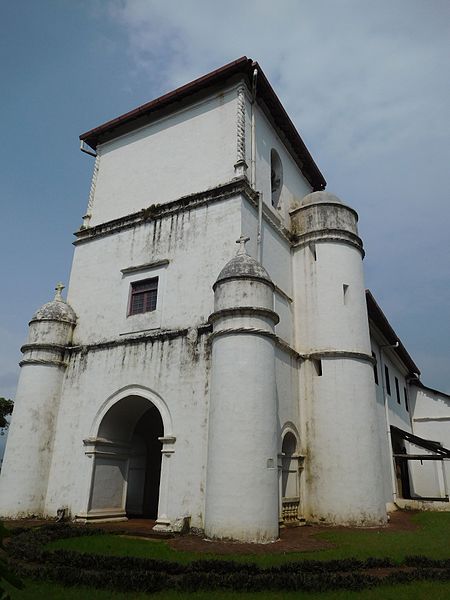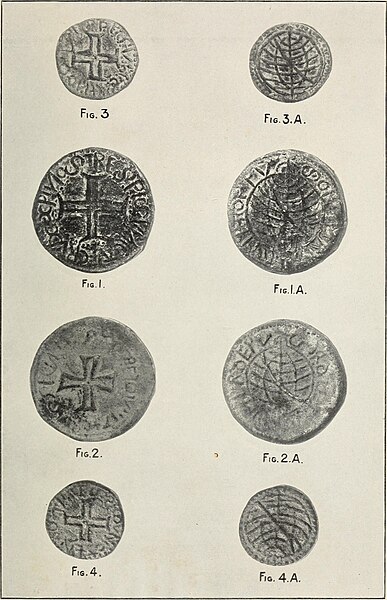Garcia de Sá was a Portuguese nobleman, soldier, explorer, fidalgo of the Royal Household, who was the 14th ruler of Portuguese India as governor from June 1548 to 13 of June 1549.
Portrait of Garcia de Sá in Livro de Lisuarte de Abreu, c. 1560.
Portuguese Malacca currency that was minted during the reign of Manuel I, between 1505 and 1521. It was called 'bastard' and amounted to 60 real Portuguese. Collection of the Museu do Dinheiro of Lisbon.
The church of Our Lady of the Rosary is the oldest church in Goa.
The epitaph ceremonial on the rich tomb, of white marble, in the wall of the chancel of the church of Our Lady of the Rosary, with the following inscription: "Here lies Catherine, the wife of Garcia de Sá which asks for whom it read that ask mercy to God for her soul."
Portuguese control of Malacca –a city on the Malay Peninsula– spanned a 130 year period from 1511 to 1641 as a possession of the Portuguese East Indies. It was captured from the Malacca Sultanate as part of Portuguese attempts to gain control of trade in the region. Although multiple attempts to conquer it were repulsed, the city was eventually lost to an alliance of Dutch and regional forces, thus beginning a period of Dutch rule.
Portuguese Malacca in Lendas da India by Gaspar Correia, ca. 1550–1563.
Construction of Malacca City: Intramuros Anno 1604 by Manuel Godinho de Eredia
Siege of Malacca by the Acehnese in 1568.
Portuguese Malacca tin coins of King Emmanuel (1495–1521) and John III (1521–1557) period were discovered during an excavation near the Malacca River mouth by W. Edgerton, Resident Councilor of Malacca in 1900.








